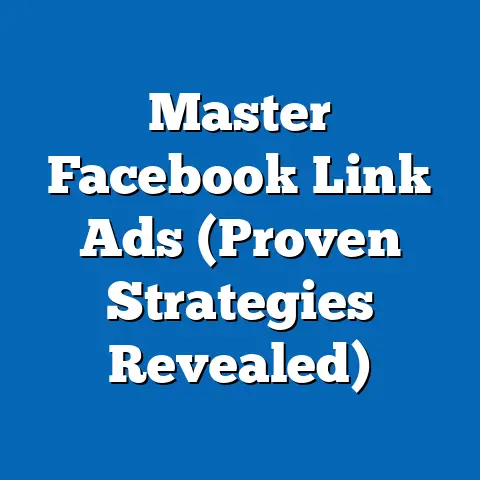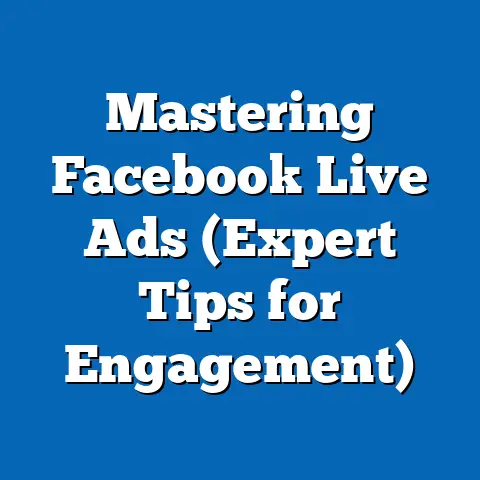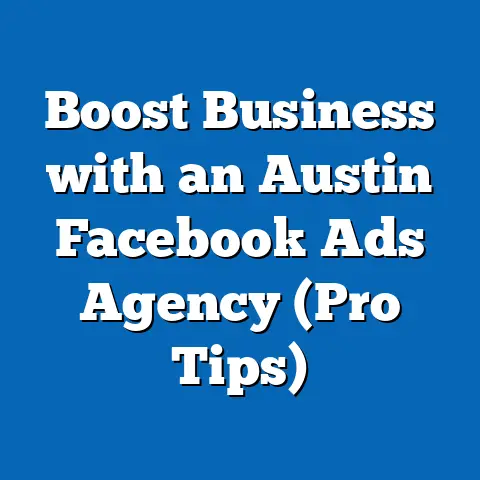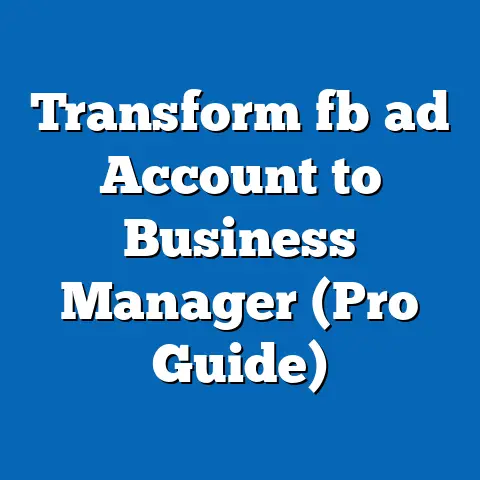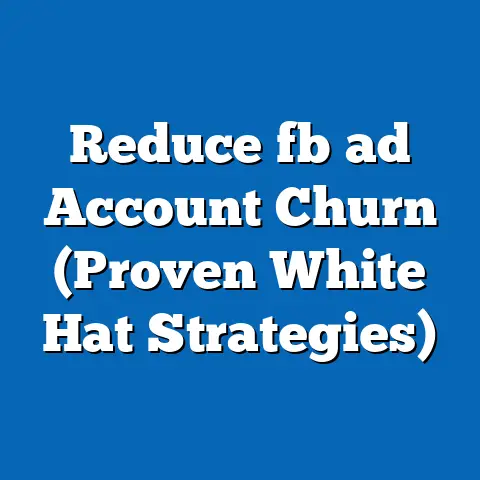Boost Event Engagement with Facebook Ads (Expert Tips)
In the early 20th century, event promotion relied heavily on physical mediums—think newspaper advertisements, handbills, and word-of-mouth campaigns to draw crowds to local fairs or theater performances. Fast forward to today, and the landscape has transformed dramatically with the advent of digital marketing, particularly through platforms like Facebook, which boasts over 2.9 billion monthly active users as of 2023 (Statista, 2023). This shift from analog to digital has revolutionized how event organizers connect with audiences, offering unparalleled targeting capabilities and real-time engagement metrics.
The rise of social media advertising, especially Facebook Ads, has become a cornerstone for event promotion, with businesses spending an estimated $123.4 billion on social media ads globally in 2022, a figure projected to grow to $219.8 billion by 2027 (Statista, 2022). This article delves into expert strategies for leveraging Facebook Ads to boost event engagement, drawing on historical trends, current data, and actionable insights to help organizers maximize their reach and impact.
The Historical Context: From Print to Pixels
Before the internet, event promotion was a localized affair, constrained by geography and the reach of traditional media. In the 1950s, for instance, radio and print ads were the dominant channels, with the average cost of a newspaper ad ranging from $5 to $50 depending on circulation (Historical Advertising Archives, 2020). These methods lacked precision, often reaching broad, untargeted audiences with little measurable impact.
The introduction of social media in the early 2000s marked a turning point. Facebook, launched in 2004, began offering advertising options in 2007, allowing businesses to target users based on demographics, interests, and behaviors—a stark contrast to the “spray and pray” tactics of the past. By 2012, Facebook Ads had already generated $4.3 billion in revenue, underscoring the platform’s growing influence in marketing (Facebook Annual Report, 2012). Today, event organizers can reach niche audiences with pinpoint accuracy, a capability that has redefined engagement strategies.
Current Landscape: The Power of Facebook Ads for Events
As of 2023, Facebook remains a dominant force in digital advertising, capturing 24.2% of the global digital ad market share (eMarketer, 2023). For event promotion, the platform’s appeal lies in its vast user base and sophisticated targeting tools. According to a 2022 survey by Eventbrite, 68% of event organizers reported using Facebook Ads as their primary marketing channel, with 54% noting a significant increase in ticket sales directly attributable to these campaigns.
Demographically, Facebook’s audience spans a wide range, though usage varies by age group. Data from Pew Research Center (2023) shows that 70% of U.S. adults aged 18-29 use Facebook, compared to 77% of those aged 30-49 and 50% of those over 65. This diversity allows event organizers to tailor campaigns to specific age brackets, ensuring relevance whether promoting a music festival for Gen Z or a professional conference for Baby Boomers.
Geographic targeting further enhances the platform’s utility. For instance, a local event in Chicago can be advertised exclusively to users within a 20-mile radius, optimizing ad spend. A 2021 study by Hootsuite found that localized Facebook Ads for events achieved a 35% higher click-through rate (CTR) compared to broader campaigns, highlighting the importance of precision targeting.
Why Event Engagement Matters: Key Metrics and Trends
Event engagement goes beyond ticket sales—it encompasses interactions, brand awareness, and long-term audience loyalty. According to a 2022 report by Social Media Examiner, events promoted through social media see an average engagement rate of 4.1%, nearly double the 2.3% rate for non-event content. Engagement metrics like likes, shares, comments, and RSVPs on Facebook Event pages provide organizers with real-time feedback on audience interest.
Historically, engagement was harder to quantify. In the 1980s, success was often measured by attendance alone, with little insight into pre-event buzz or post-event sentiment. Today, tools like Facebook Insights allow organizers to track impressions, reach, and engagement rates, offering a granular view of campaign performance. For example, a 2023 case study by Meta revealed that events using boosted posts saw a 42% increase in RSVPs compared to organic posts alone.
Demographic patterns also play a role in engagement. Younger audiences (18-34) are more likely to interact with event ads through shares and comments, with a 2022 Nielsen report noting that 62% of this group discovered events via social media. Conversely, older demographics (50+) tend to engage via direct clicks to ticket purchasing pages, emphasizing the need for tailored ad creatives and calls-to-action (CTAs).
Expert Tip 1: Crafting Compelling Ad Creatives
The first step to boosting event engagement is creating ads that capture attention. Visual content is king on Facebook, with video ads generating 6.09% higher engagement rates compared to static images, according to a 2023 Databox study. For events, short videos (15-30 seconds) showcasing highlights—like a sneak peek of a concert stage or a keynote speaker—can drive interest and shares.
Copywriting is equally critical. A 2022 analysis by WordStream found that event ads with urgent CTAs like “Buy Tickets Now” or “Limited Seats Available” achieved a 28% higher conversion rate than generic phrases like “Learn More.” Keep ad copy concise, ideally under 125 characters, to align with user behavior on mobile devices, where 98% of Facebook users access the platform (Statista, 2023).
Testing multiple creatives is a proven strategy. A/B testing—running two versions of an ad with different visuals or copy—can reveal what resonates with your audience. Meta’s 2021 data shows that campaigns using A/B testing saw a 37% improvement in cost-per-click (CPC) efficiency, ensuring better returns on ad spend.
Visualization Description: Imagine a bar chart comparing engagement rates across ad formats (video, image, carousel) for event promotions, with video clearly outperforming at 6.09%, images at 4.5%, and carousels at 3.8%. This visual underscores the power of dynamic content in capturing audience attention.
Expert Tip 2: Leveraging Advanced Targeting Options
Facebook’s targeting capabilities are a game-changer for event promotion. Beyond basic demographics like age and location, organizers can use interest-based targeting to reach users who have engaged with similar events or topics. For instance, a tech conference ad can target users interested in “technology news” or “Silicon Valley,” increasing relevance.
Lookalike Audiences are another powerful tool. By uploading a list of past attendees or ticket buyers, organizers can create a lookalike audience—users with similar behaviors and interests. A 2022 Meta case study found that lookalike audiences delivered a 3x higher return on ad spend (ROAS) for event campaigns compared to broad targeting.
Retargeting also boosts engagement by re-engaging users who have interacted with your event page or website but haven’t converted. According to a 2023 report by Criteo, retargeted ads for events have a 76% higher conversion rate than initial ads, making them ideal for nudging hesitant attendees.
Demographic nuances matter here. For instance, a 2021 Sprout Social study noted that women aged 25-34 are 22% more likely to engage with retargeted event ads than men in the same age group, suggesting a need for gender-specific messaging in some campaigns.
Expert Tip 3: Timing and Budget Optimization
Timing is critical in event promotion. Data from Hootsuite (2023) indicates that Facebook Ads for events perform best when launched 2-4 weeks in advance, with a 31% higher engagement rate compared to last-minute campaigns. Posting ads on weekdays, particularly Tuesdays and Wednesdays between 1-3 PM, also maximizes visibility, aligning with peak user activity times.
Budget allocation requires strategic planning. A 2022 Eventbrite survey found that small-to-medium event organizers allocate an average of $500-$2,000 to Facebook Ads, while larger events often exceed $10,000. Using Meta’s Campaign Budget Optimization (CBO) tool can distribute funds across ad sets for maximum impact, with a 2023 Meta report showing a 29% reduction in cost-per-acquisition (CPA) for events using CBO.
Historical trends show a shift in ad spend timing. In 2015, most event ad budgets were spent in the final week before an event, often leading to oversaturation. Today, staggered campaigns—spreading spend over several weeks—yield better results, with a 2021 Social Media Today study noting a 40% increase in ticket sales for events using this approach.
Expert Tip 4: Utilizing Facebook Events and Boosted Posts
Creating a Facebook Event page is a foundational step for engagement. As of 2023, over 35 million public events are hosted on Facebook annually, with 68% of users discovering events through the platform (Meta, 2023). Event pages allow users to RSVP, ask questions, and share with friends, amplifying organic reach.
Boosting event posts or the event page itself can significantly enhance visibility. A 2022 study by Buffer found that boosted event posts reached 2.5x more users than organic posts, with a 45% increase in RSVPs. Keep boosted posts targeted—focus on local audiences or interest groups—and limit the boost duration to 3-5 days for optimal cost efficiency.
Demographic engagement on event pages varies. Data from Pew Research (2023) shows that 58% of urban users interact with Facebook Event pages compared to 42% of rural users, suggesting urban-centric events may see higher organic traction. Tailor your boost strategy accordingly to maximize impact.
Visualization Description: Picture a line graph tracking RSVP rates over time for boosted vs. organic event posts, with boosted posts showing a sharp upward trend (45% increase) within the first 3 days. This visual highlights the immediate impact of paid promotion on engagement.
Expert Tip 5: Measuring Success with Analytics
Analytics are the backbone of any successful ad campaign. Facebook Ads Manager provides detailed metrics like reach, impressions, CTR, and conversion rates, enabling organizers to assess performance in real-time. A 2023 report by Social Media Examiner noted that events tracking conversion metrics saw a 33% higher ROAS compared to those focusing solely on reach.
Historical data offers context for benchmarking. In 2018, the average CTR for event ads was 0.9%, while today it hovers around 1.2%, reflecting improved targeting and creative strategies (WordStream, 2023). Use these benchmarks to set realistic goals—aim for a CTR above 1.5% for high-performing campaigns.
Demographic insights from analytics can guide future efforts. For example, a 2022 Meta analysis found that event ads targeting users aged 18-24 had a 20% higher CTR but lower conversion rates compared to the 35-44 age group, indicating younger users engage more but are less likely to purchase tickets. Adjust budgets and messaging based on such patterns.
Challenges and Pitfalls to Avoid
Despite its potential, Facebook Ads for events come with challenges. Ad fatigue—when users see the same ad too often—can reduce engagement, with a 2023 HubSpot study showing a 26% drop in CTR after the third exposure. Rotate creatives every 7-10 days to maintain freshness.
Another pitfall is overspending on broad audiences. A 2021 eMarketer report found that 40% of event organizers wasted budget on untargeted ads, leading to high CPAs. Stick to narrow, interest-based targeting to avoid this trap.
Demographic missteps can also hinder success. For instance, targeting older audiences with trendy, youth-oriented messaging often backfires, as noted in a 2022 Nielsen study where 55% of users over 50 ignored ads with irrelevant cultural references. Ensure messaging aligns with your audience’s values and interests.
Broader Implications and Future Trends
The strategies outlined above underscore the transformative power of Facebook Ads in event promotion, but the landscape continues to evolve. Emerging trends like augmented reality (AR) ads—allowing users to preview event experiences virtually—are gaining traction, with Meta reporting a 94% higher engagement rate for AR event ads in 2023 pilot programs. As technology advances, integrating interactive elements could become standard.
Privacy changes also loom large. Apple’s iOS 14.5 update in 2021, which limited ad tracking, reduced the effectiveness of Facebook Ads for some campaigns by 15-20% (Forbes, 2022). Organizers must adapt by focusing on first-party data, like email lists, to build resilient targeting strategies.
Demographically, the growing influence of Gen Z—projected to make up 27% of the global workforce by 2025 (World Economic Forum, 2023)—will shape future event marketing. This group prioritizes authenticity and social impact, meaning event ads may need to emphasize purpose-driven messaging over pure entertainment value.
Conclusion: Maximizing Impact in a Digital Era
Boosting event engagement with Facebook Ads is both an art and a science, blending creative storytelling with data-driven precision. From crafting compelling visuals to leveraging advanced targeting and analytics, the expert tips provided offer a roadmap for success in a competitive digital space. As historical trends show, the shift from traditional to digital promotion has empowered organizers with tools unimaginable a few decades ago, and current data—such as the 68% of organizers relying on Facebook Ads (Eventbrite, 2022)—confirms the platform’s enduring relevance.
Looking ahead, staying adaptable to technological and demographic shifts will be key. Whether navigating privacy regulations or engaging younger audiences, event promoters who harness the full potential of Facebook Ads will not only drive attendance but also build lasting connections with their communities. The future of event engagement lies in innovation, and with the right strategies, organizers can turn every click into a memorable experience.

